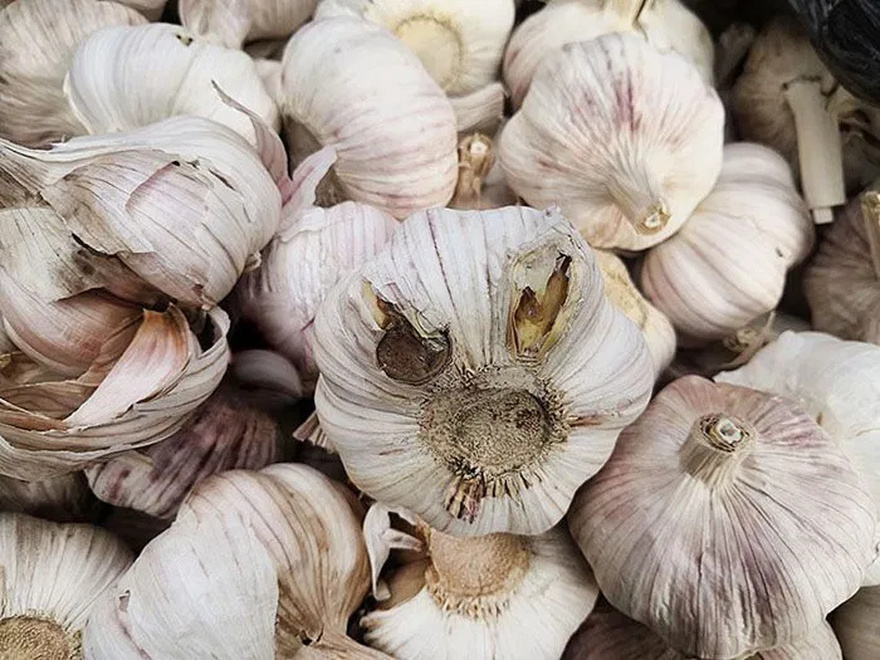Even if they are given for free, you shouldn’t take them
1. Garlic cloves separate widely from the bulb
Garlic bulbs with cloves that are spaced far apart and have partially lost their protective outer skin may seem appealing because they appear plump and easy to peel. However, if you plan to store garlic for an extended period, avoid this type. Without the outer layer, the cloves are more susceptible to mold, oxidation, and sprouting.
For better longevity, choose bulbs with tightly packed cloves that remain firmly attached to the stem and are covered with thick, intact skin. This helps protect the garlic from environmental factors, slows oxidation, and extends its freshness.

2. Soft garlic cloves
Always check the firmness of the cloves by gently pressing them. If they feel mushy or overly soft, the garlic is likely spoiled. Even if the entire bulb lacks firmness and doesn’t feel solid in your hand, it’s best to avoid buying it in bulk. Soft garlic is more prone to mold, shrinks over time, and loses its quality quickly.
3. Wrinkled or soft outer skin
Garlic with a wrinkled or soft outer skin may not have been dried properly after harvesting. When the drying process is incomplete, the skin retains moisture, resulting in a milder aroma and a higher risk of mold when stored for too long.